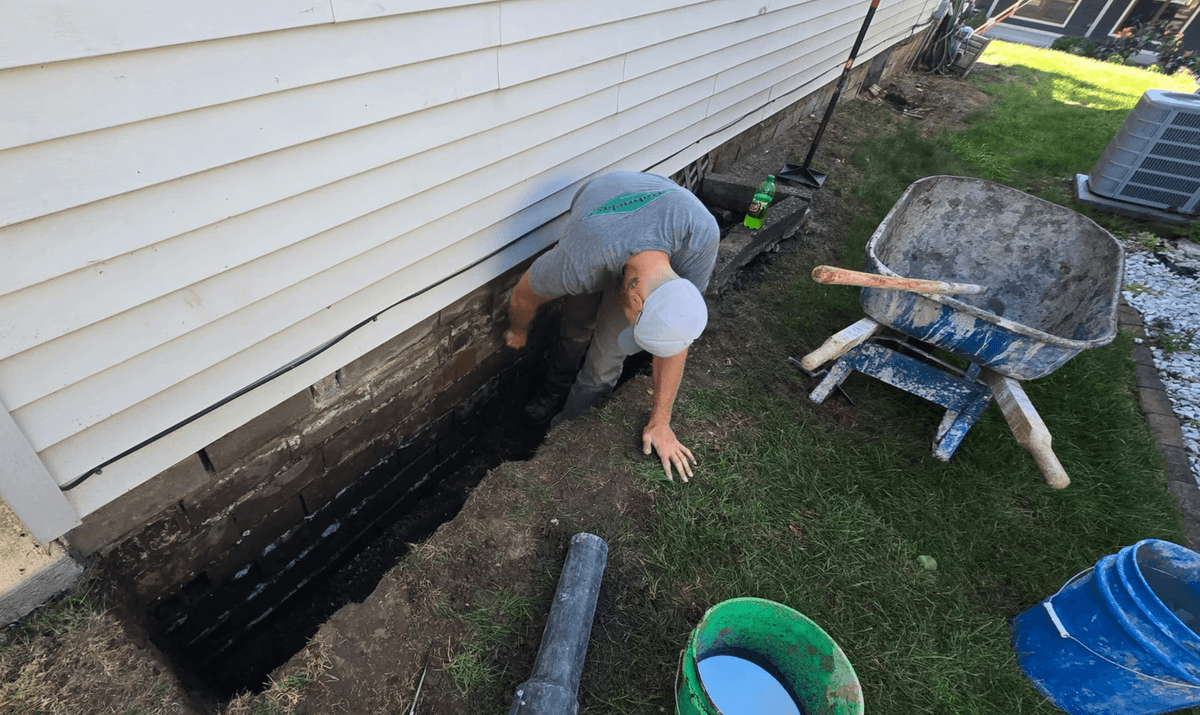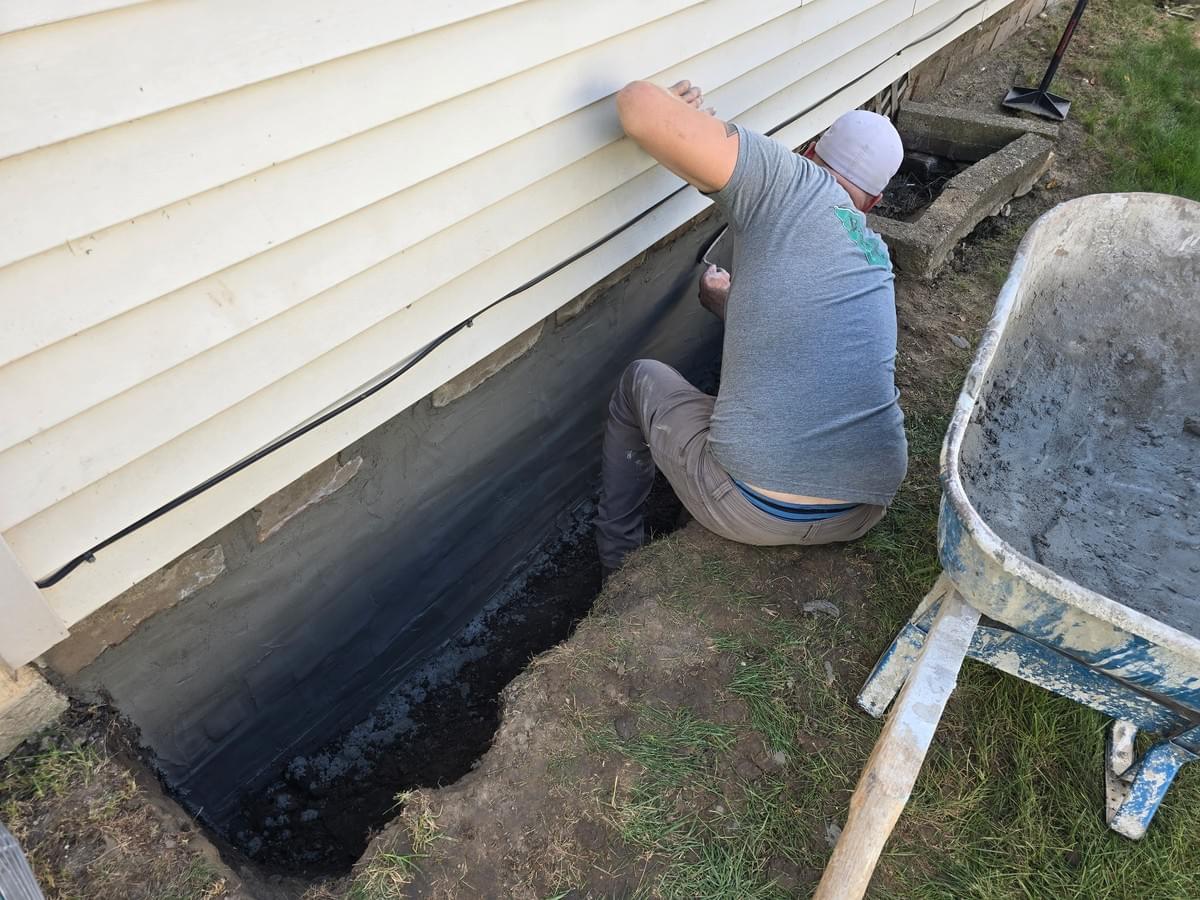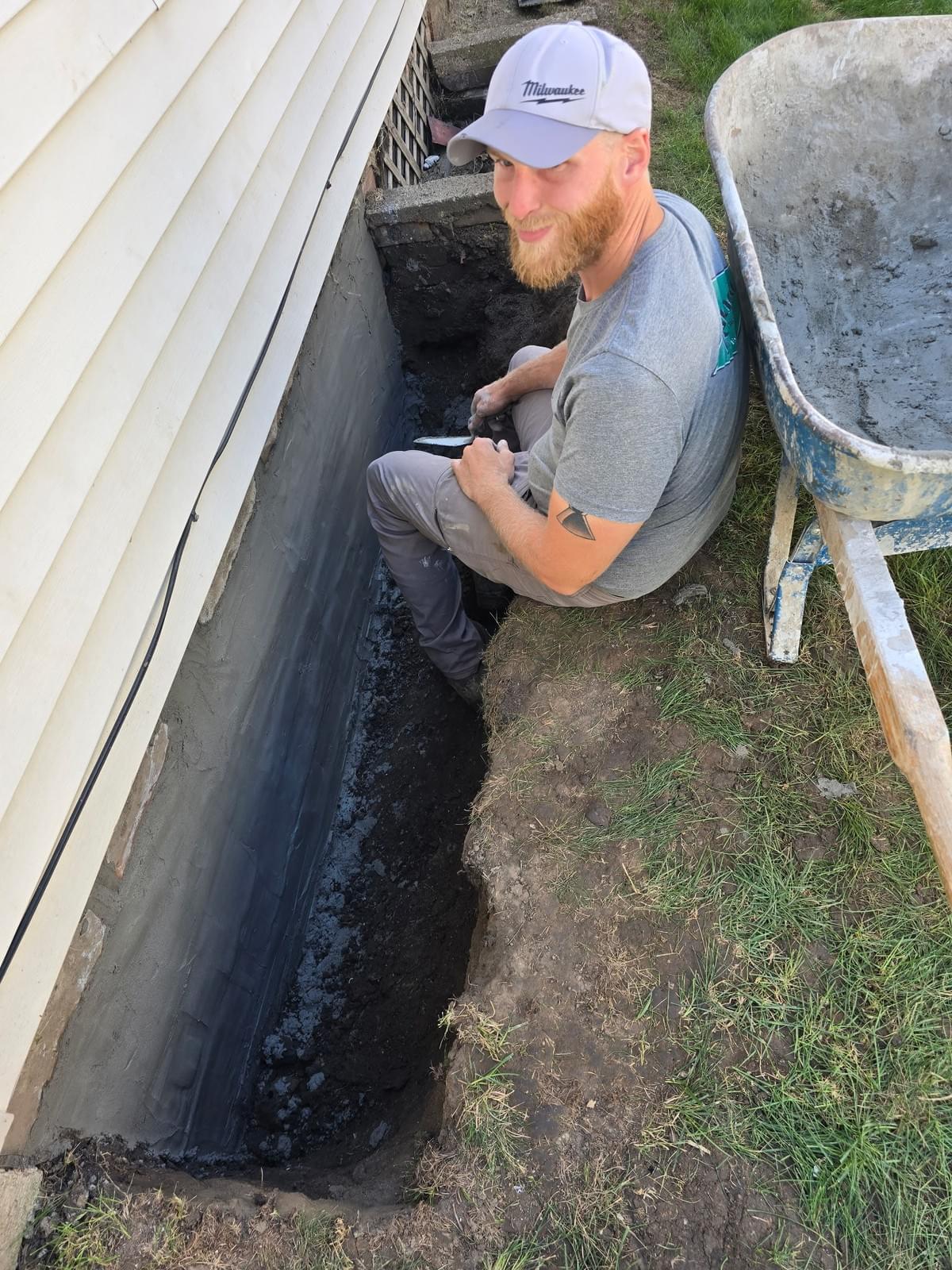At Behncke Construction, we understand that a foundation is only as strong as the materials protecting it. Many homes in the Midwest rely on block foundations, and while durable, block and brick masonry are porous by nature. Over time, these foundations are subject to water intrusion, cracking, spalling, and mortar deterioration. Without proper maintenance, moisture combined with freeze-thaw cycles and hydrostatic pressure can compromise the structural integrity of the foundation.
One highly effective foundation repair method we use is parging, a cementitious resurfacing technique designed to restore, seal, and reinforce foundation walls.

When and Why Is Parging Necessary
Block foundations are particularly vulnerable to:
- Hydrostatic pressure – The buildup of groundwater against the wall forces water into tiny cracks and mortar joints.
- Moisture migration – Masonry materials wick water through capillary action, leading to damp basements and mold growth.
- Surface deterioration – Over time, exposure to soil, salts, and weather weakens the outer layer of block and mortar.
When left unchecked, these issues accelerate structural damage, requiring costly excavation or even full wall replacement. Parging provides a cost-effective repair and protection system that halts further deterioration and creates a barrier against water penetration.
The Process of Foundation Parging
1. Excavation and Wall Exposure
We begin by excavating soil to expose the foundation wall down to the footing. This allows full inspection of cracks, voids, and existing damage.-Surface Cleaning and Preparation
The block foundation is thoroughly cleaned of soil, efflorescence, loose mortar, and contaminants. This step ensures maximum bond between the substrate and the parging mortar.
2. Structural Patching and Crack Filling
Cracks, mortar voids, and deteriorated joints are cut out and repointed. Hydraulic cement or polymer-modified mortars are used to stabilize active cracks.
3. Application of Parging Mortar
A proprietary cement-based mortar blend is hand-troweled across the surface. This coat penetrates surface pores, fills voids, and creates a dense, monolithic finish. The application can be done in multiple passes to achieve uniform coverage and structural reinforcement.
4.Moisture Barrier Integration
In many cases, a waterproofing admixture or elastomeric coating is applied over the parging to provide redundancy against water intrusion. This two-layer system resists both negative-side and positive-side water pressure.

Benefits of Parging as a Foundation Repair Solution
- Water Intrusion Protection – The dense parge coat closes pathways for water infiltration, reducing hydrostatic seepage.
- Structural Reinforcement – By bonding to the block surface, parging redistributes surface stresses and strengthens weakened masonry walls.
- Freeze-Thaw Resistance – A sealed wall is less vulnerable to frost expansion and spalling damage.
- Improved Energy Efficiency – By reducing air infiltration, parging contributes to a more thermally stable basement environment.
- Extended Service Life – Properly parged walls last significantly longer, reducing the need for major structural intervention.
Long-Term Foundation Health
Parging is not just cosmetic. It is a preventative foundation repair strategy that addresses the root causes of water intrusion before they escalate. When combined with exterior drainage management—such as properly installed footing drains and grading—parging helps ensure a dry, stable, and durable foundation.
At Behncke Construction, our crews are trained to perform these repairs to exacting standards, ensuring that the materials bond properly and deliver long-term performance. Since 1948, we’ve been protecting homes across Davenport and the Quad Cities with foundation repair, waterproofing, and masonry restoration.


